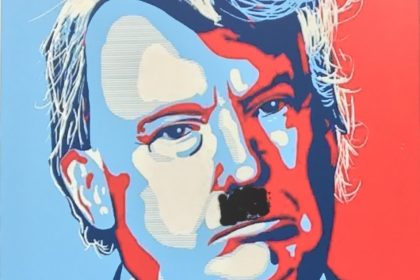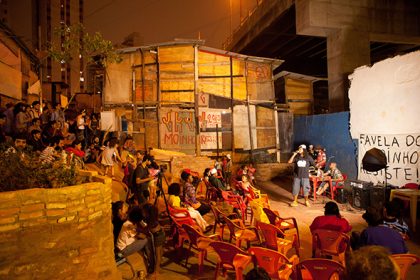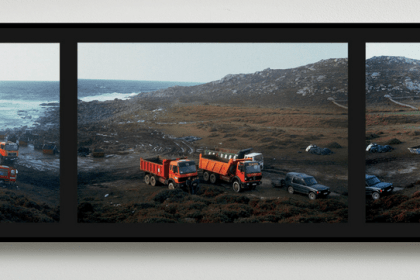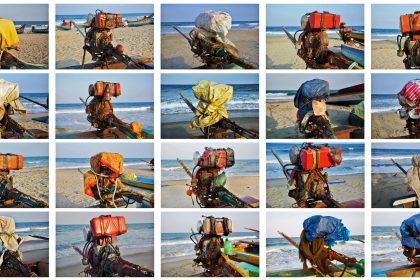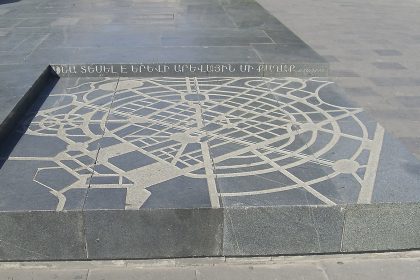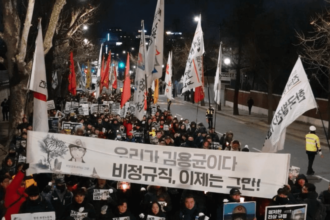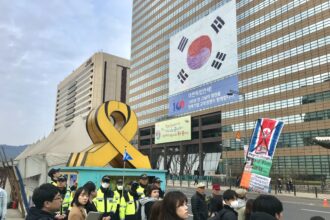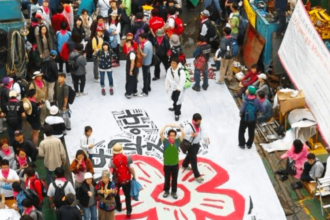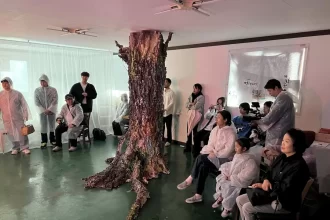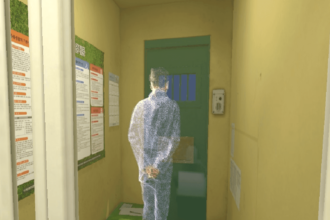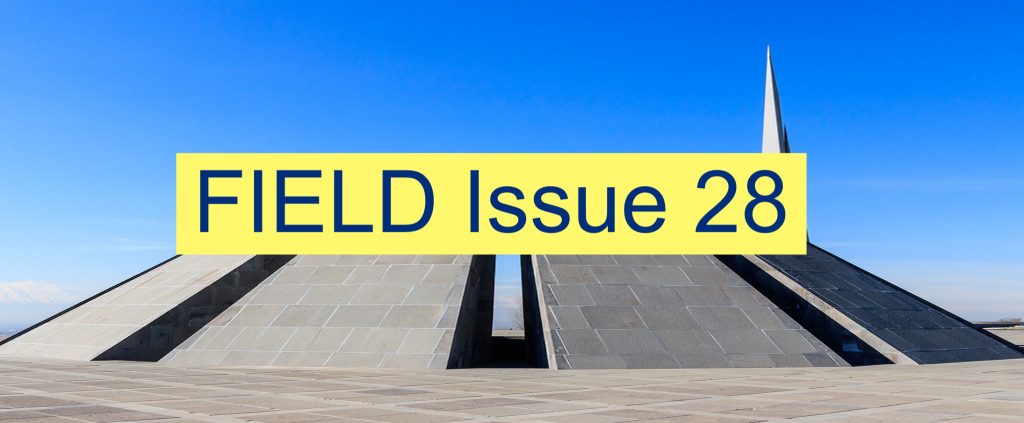
“Patriarchal Oil No-More”: Collaborative Memorials of an Oil Spill Clean Up in Galicia, Spain
Paloma Checa-Gismero
Socially Engaged and Public Art in India: A Chronology from 1990 to the Present (Part 1)
Sreejata Roy
Through the Nomadic Museum: Artistic Practice and the Committed Museum
David Gutiérrez Castañeda
Issue 28 | Fall 2024
Previous Issue
Latest News
Call for Papers: FIELD Tenth Anniversary Issue
FIELD’s first issue was launched in the Spring of 2015. During the past decade we have published over two hundred essays, interviews and reviews focused on the history and theory of socially engaged art practice. Our special issues have focused on topics ranging from artistic and cultural production in the Movement for Black Lives, to the Migrant Worker’s collective in Beijing, to the global rise of neo-authoritarian regimes, to the relationship between art and social movements in Africa, to new forms of embodied protest in Iran, to environmental activism in Japan, among many other themes. FIELD was founded in response to the lack of meaningful critical analysis devoted to engaged art practices in mainstream art journals and online platforms. Sadly, that situation has not changed significantly since our founding. There remains very little independent, substantive analysis of projects produced outside the global network of galleries, museums, biennials, commissioning agencies, and art fairs, and in conjunction with movements for social and political change. To mark FIELD’s tenth anniversary, we are soliciting essay proposals for a special issue that will reflect on the key issues and challenges facing the field of socially engaged art practice and scholarship. We are open to any topic, but we will list some suggested themes and questions below.
—The Ontology of Engaged Art
Conventional forms of contemporary art acquire an abstract, global character by virtue of their dissemination within the international circuits of the art market and its affiliated academic and critical institutions. Engaged art, on the other hand, is most often defined by the complex interrelationships it establishes with specific, geographically delimited constituencies and sites of resistance. Given this fact,
does engaged art possess any generic characteristics that transcend its localized site of production? Is it possible to speak of socially engaged art as a “global” phenomenon? What ontological qualities differentiate engaged art from forms of art practice that operate primarily within the institutional artworld? What historical genealogies, and past practices (artistic or otherwise), are most helpful in understanding the nature of contemporary engaged art? In what way has the existing discourse and lexicon of “engaged art” carried forward certain Eurocentric assumptions about the nature of both art and political transformation?
—Engaged Art and the Changing of Self
Both aesthetic experience and praxis entail the transformation of consciousness (“in revolutionary activity,” as Marx writes in The German Ideology, “the changing of self coincides with the changing of circumstances”). If there is a central lacuna in the Marxist tradition it lies in the tendency to lapse into functionalist models of self-transformation (evident in frequent references to the totalizing ideological subordination of the working class and their necessary dependence on enlightened vanguard intellectuals who are uniquely able to escape this subordination). What engaged art suggests is that consciousness can be transformed through a horizontal engagement with actual processes of social and political change, in a manner that is both creative and agential. What are the specific mechanisms by which subjectivity is changed, or new forms of critical insight awakened, in engaged art, and in acts of resistance more generally? Is it possible to construct case studies that can help us understand these complex processes more fully and deeply, and to draw from them more general insights into the epistemological nature of engaged art?
—The Pragmatic and the Prefigurative
It is typical for critics to accuse of engaged art practices of “collapsing” the unique aesthetic qualities of art entirely into instrumental forms of political change. How does engaged art encourage us to think of social and political resistance differently, as possessing autopoietic or creative qualities? How do engaged art practices call upon us to reconsider the relationship between the political and the aesthetic, and between the practical and the prefigurative, in both art and activism? What new forms of aesthetic experience do engaged art practices generate? How are elements of conventional art practice deployed, and transmuted, in the context of engaged art production?
—Criticality and Scale
What makes socially engaged art “critical” and what forms of criticality does it engender? What potential linkages exist between localized gesture of resistance and a critique of the systemic nature of capitalist domination? How might local actions become scalable and contribute to the formation of broader coalitions or
movements, and what role might engaged art play in that process? How can engaged art help us understand the process by which the experience of self- transformation might become communicable within a broader social network, and help to orient concrete action in the world?
—The Future of Socially Engaged Art and Criticism
What are the most significant challenges facing the development of engaged art practice and criticism, and what are its most exciting potentials? What new forms of theory and what new research methodologies might critics draw on in developing their analysis of engaged art? What role should the critic, historian or theorist play in relationship to socially engaged art practice? And what evaluative criteria should we use in determining its significance?
We are open to either shorter reflections (1000-1500 words) or longer essays (3000-6000). Submit proposals and queries to: fieldjournal1@gmail.com
• Deadline for Proposals: December 1, 2024
• Deadline for Completed Essays: January 30, 2025


